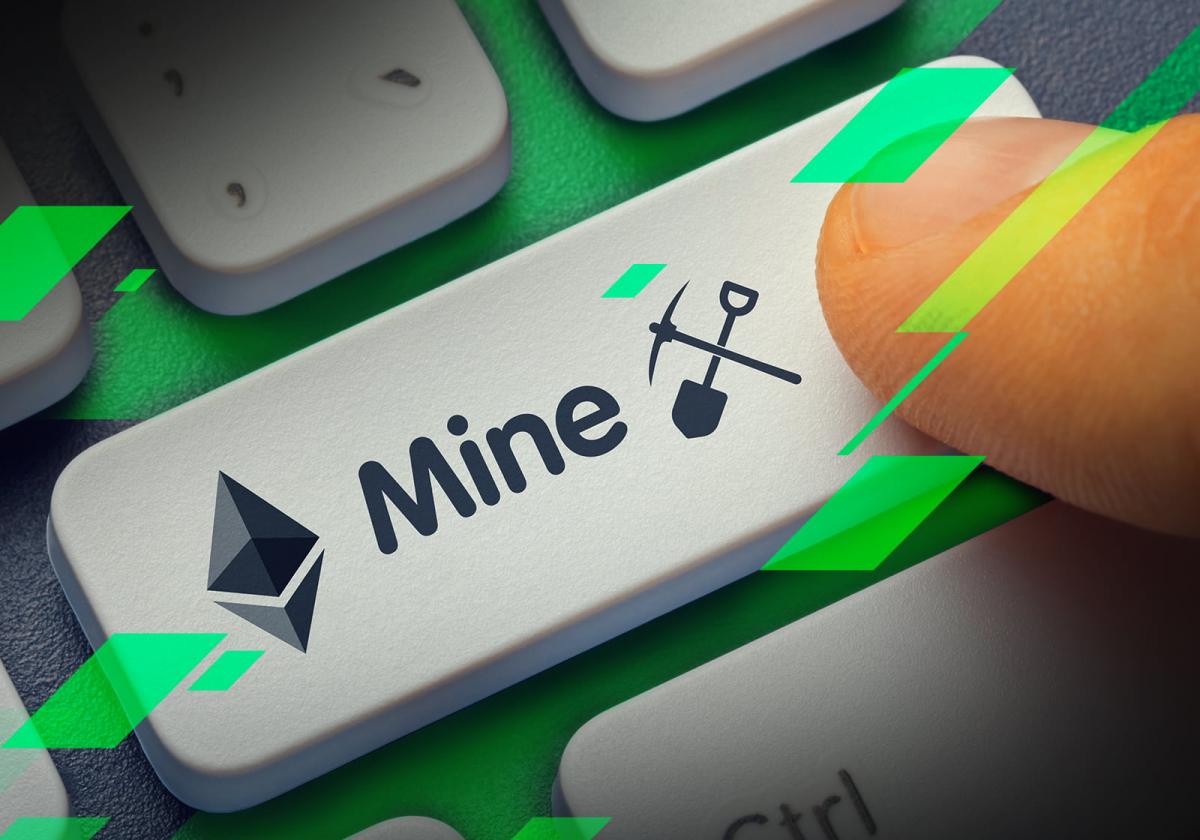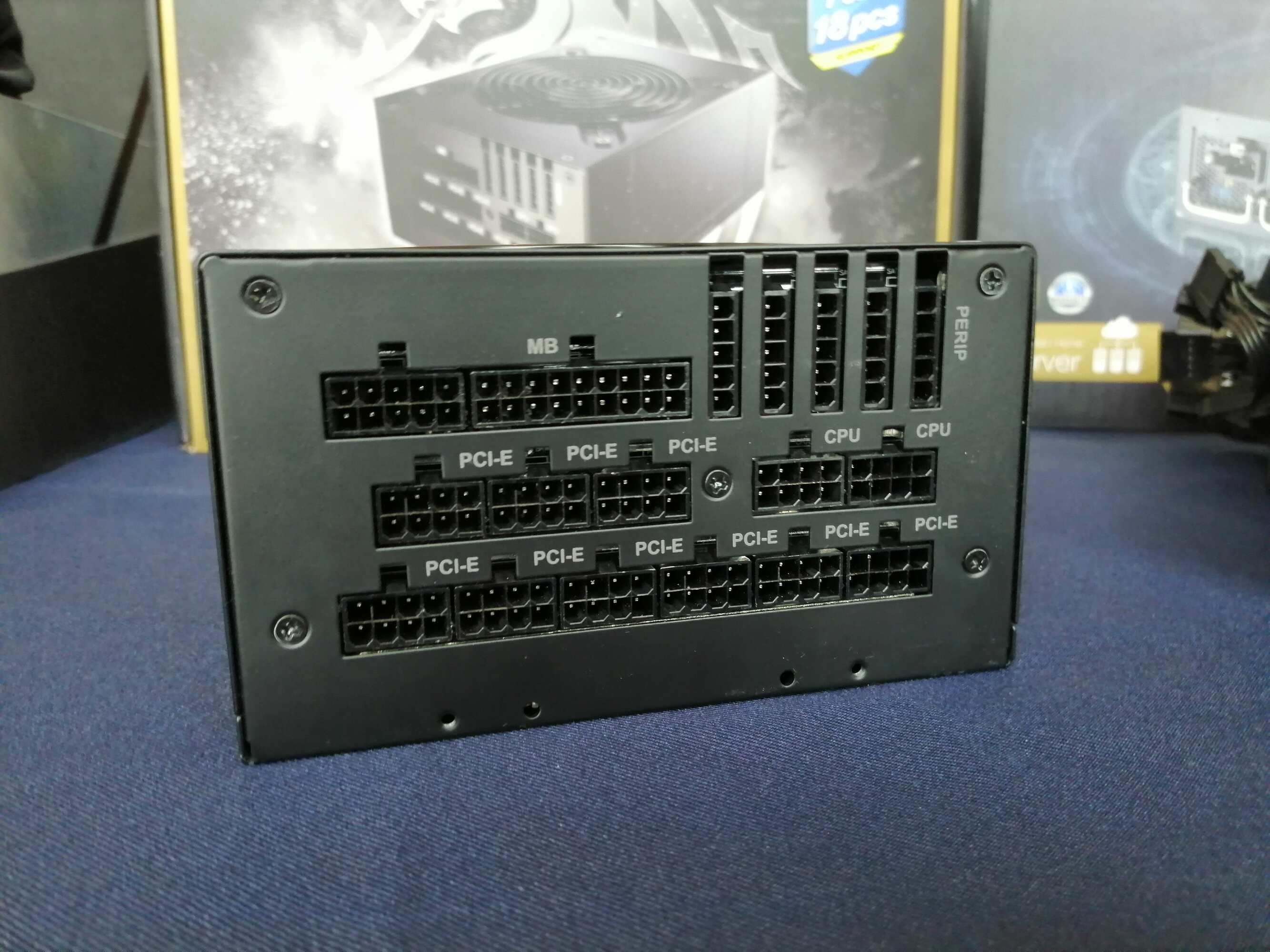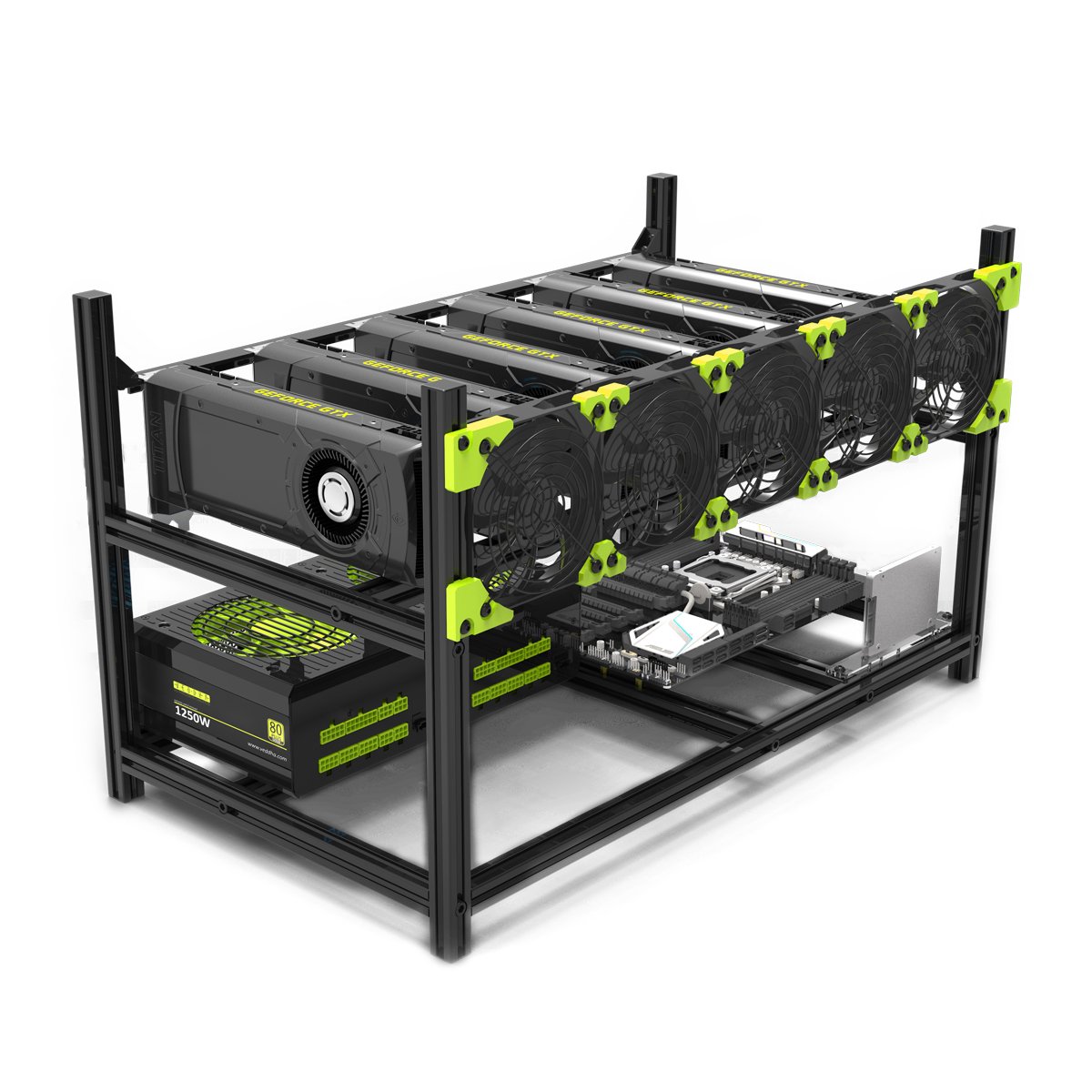Introduction
Cryptocurrency mining has become increasingly popular in recent years, with Ethereum being one of the most sought-after currencies to mine. As a decentralized, open-source blockchain platform, Ethereum offers substantial opportunities for miners to earn rewards by verifying transactions and securing the network. However, if you’re new to the world of mining, you may be wondering how long it takes to mine Ethereum.
In this article, we will explore the various factors that determine the time it takes to mine Ethereum. It’s important to note that mining time can vary significantly depending on several factors, including hardware capabilities, mining difficulty, network hashrate, and electricity costs.
Understanding the core concepts of Ethereum mining is essential before diving into the timeframe for mining. By providing a comprehensive overview of these factors, you will be better equipped to estimate the time required to successfully mine Ethereum and make informed decisions.
So, without further ado, let’s delve into the world of Ethereum mining and explore the factors that influence mining time.
What is Ethereum Mining?
Ethereum mining is the process by which new Ether tokens are created and transactions on the Ethereum network are verified and recorded. Ethereum operates on a proof-of-work (PoW) consensus mechanism, which relies on miners solving complex mathematical puzzles in order to secure the network and validate transactions.
Miners contribute their computational power to solve these puzzles, and in return, they are rewarded with a certain amount of Ether. This incentivizes miners to participate in the network and ensures the integrity of the Ethereum blockchain.
To mine Ethereum, miners use specialized computer hardware, such as graphics processing units (GPUs), which are highly efficient at performing the calculations required for mining. These GPUs are optimized for parallel processing, making them ideal for the complex calculations involved in mining Ethereum.
When a miner successfully solves a mathematical puzzle, they add a new block to the blockchain and receive a block reward in the form of Ether. Additionally, miners can earn transaction fees from the transactions included in the block they mine. This process helps to secure the network and acts as an incentive for miners to continue validating transactions.
The mining process involves competing with other miners to solve puzzles, and the miner who successfully solves the puzzle first gets to add the block to the blockchain. However, as more miners join the network, the difficulty of the puzzles increases, requiring more computational power to solve them.
Overall, Ethereum mining plays a crucial role in maintaining the security and functionality of the Ethereum network. It allows for the creation of new Ether and facilitates the validation and processing of transactions. By participating in mining, individuals can contribute to the decentralized nature of the network and potentially earn rewards for their efforts.
Factors that Affect Mining Time
Several factors influence the time it takes to mine Ethereum. Understanding these factors is crucial for estimating the mining timeframe accurately. Let’s explore some of the key elements that can impact mining time:
1. Mining Hardware: The type and quality of mining hardware you use play a significant role in determining mining time. High-performance GPUs are more efficient at solving the mathematical puzzles required for mining Ethereum, resulting in faster mining times. Investing in top-tier mining hardware can significantly decrease the time it takes to mine Ethereum.
2. Mining Difficulty: The Ethereum network adjusts the mining difficulty dynamically to ensure that a new block is added to the blockchain approximately every 15 seconds. As more miners join the network, the difficulty increases, making it harder to solve the puzzles. Consequently, higher mining difficulty can prolong the time it takes to mine Ethereum.
3. Network Hashrate: The hashrate refers to the total computational power being contributed to the Ethereum network by all miners. A higher hashrate means more mining power, which increases the probability of solving the puzzles and, subsequently, reduces mining time. Conversely, a lower network hashrate may result in longer mining times.
4. Electricity Cost: Mining Ethereum consumes a significant amount of electricity. The cost of electricity can influence your mining profitability, as higher electricity costs can eat into your potential mining rewards. Miners operating in areas with cheaper electricity rates have a cost advantage and may be able to mine Ethereum more efficiently.
5. Mining Pool Participation: Joining a mining pool can potentially decrease mining time. Mining pools are groups of miners who combine their computational power to increase their chances of solving puzzles and earning rewards. By pooling resources, miners can collectively mine more efficiently and reduce the time it takes to mine Ethereum.
6. Internet Connectivity: A stable and reliable internet connection is crucial for efficient mining. Slow or intermittent internet connectivity can lead to mining disruptions and potentially increase mining time.
While these factors are significant, it’s important to note that mining Ethereum is a dynamic process, influenced by various external factors. Therefore, it is challenging to provide an exact time frame for mining Ethereum. However, by considering these factors and staying updated with industry trends, miners can make informed decisions to optimize their mining operations and potentially reduce mining time.
Mining Hardware and Its Impact on Mining Time
The choice of mining hardware has a significant impact on the time it takes to mine Ethereum. High-performance mining hardware can greatly enhance mining efficiency and reduce the overall mining time. Let’s explore how mining hardware influences the mining process:
1. Graphics Processing Units (GPUs): GPUs are the most commonly used hardware for Ethereum mining. These powerful processors are designed to perform parallel computations, which are ideal for solving the mathematical puzzles involved in mining. Investing in high-quality GPUs with greater computational power can significantly decrease the time it takes to solve these puzzles and mine Ethereum.
2. Application-Specific Integrated Circuits (ASICs): While GPU mining is popular, specialized mining hardware known as ASICs has emerged as a more efficient option for certain cryptocurrencies. However, Ethereum’s mining algorithm, Ethash, is designed to be ASIC-resistant, making GPU mining the preferred choice for Ethereum miners.
3. Hashrate: The hashrate of your mining hardware refers to the number of computations it can perform per second. Higher hashrate allows for faster puzzle-solving, potentially reducing the time it takes to mine Ethereum. Miners often strive to increase their hashrate by either upgrading their existing hardware or investing in more powerful hardware to maximize their mining efficiency.
4. Cooling and Power Consumption: Mining hardware generates a significant amount of heat, especially during intense mining operations. Maintaining proper cooling systems is crucial to ensure that the hardware operates optimally without any risk of overheating. Additionally, mining hardware consumes a substantial amount of electricity. Miners need to consider the power consumption of their hardware and the associated electricity costs, as high power consumption can affect profitability and mining time.
5. Hardware Efficiency: The efficiency of mining hardware determines how much computational power it can deliver relative to its power consumption. More efficient hardware can provide a higher hashrate with lower power consumption. Miners often prioritize efficiency when selecting mining hardware to maximize their mining efficiency and reduce the time it takes to mine Ethereum.
It’s important to stay informed about the latest advancements in mining hardware technology. As new, more efficient hardware is developed, miners have the opportunity to upgrade their equipment to enhance their mining capabilities and potentially decrease mining time.
Each miner’s hardware configuration and optimization strategy may vary, impacting their individual mining efficiency and timeframes. Furthermore, the mining landscape is dynamic, with new hardware releases and updates occurring regularly. Therefore, it is crucial for miners to conduct thorough research, stay updated with industry trends, and carefully consider their hardware choices to optimize their mining operations and reduce mining time.
Mining Difficulty and Its Impact on Mining Time
Mining difficulty plays a crucial role in determining the time it takes to mine Ethereum. Mining difficulty is a dynamic parameter that adjusts automatically to maintain a consistent block creation time, typically around 15 seconds. Here’s how mining difficulty influences mining time:
1. Difficulty Adjustment: The Ethereum network adjusts the mining difficulty approximately every 14-15 days using a mathematical formula. If more miners join the network, the difficulty increases to ensure that blocks are not created too quickly. Conversely, if miners leave the network, the difficulty decreases to maintain the desired block time. Higher mining difficulty means that miners need more computational power and time to solve the mathematical puzzles required to mine Ethereum.
2. Mining Time Variability: Due to the dynamic nature of mining difficulty, the time it takes to mine a block can vary significantly. For example, during a period of high mining difficulty, it can take longer to find a suitable solution to the mathematical puzzle. Conversely, when the mining difficulty is lower, blocks can be mined more quickly. As a result, the time required to mine a specific number of Ethereum blocks can fluctuate over time.
3. Impact on Profitability: Higher mining difficulty generally leads to increased competition among miners. To stay profitable, miners may need to invest in more powerful hardware or adjust their mining strategies. However, even with these efforts, the increasing mining difficulty can impact profitability by requiring more resources and time to mine Ethereum successfully.
4. Network Security and Decentralization: Mining difficulty plays a crucial role in maintaining the security and decentralization of the Ethereum network. The higher the difficulty, the more secure the network becomes, as it becomes more challenging for malicious actors to overpower the collective mining power. This aspect ensures the integrity and reliability of the Ethereum blockchain.
When estimating mining time, it’s important to consider the current mining difficulty level and the projected changes in difficulty. Miners should also keep an eye on industry trends and anticipate any upcoming adjustments in mining difficulty, as this information can greatly impact their mining plans and overall profitability.
It’s worth noting that mining difficulty is influenced by various factors, including the number of miners participating in the network, the collective hashrate, and the overall demand for Ethereum mining. As the Ethereum ecosystem continues to evolve, miners must adapt to changing mining difficulty levels, continuously optimize their mining operations, and make informed decisions to efficiently mine Ethereum within a given timeframe.
Network Hashrate and Its Impact on Mining Time
The network hashrate of Ethereum is a crucial factor that directly affects the time it takes to mine new blocks. The higher the network hashrate, the more computational power is dedicated to mining Ethereum, potentially decreasing mining time. Let’s explore the impact of network hashrate on mining time:
1. Increased Competition: As the network hashrate increases, more miners are actively participating in the mining process. This results in intensified competition to solve the mathematical puzzles required for block validation. With more computational power dedicated to mining, the difficulty of finding a solution also increases. Consequently, miners may need to invest in more powerful hardware or join mining pools to enhance their chances of mining a block within a reasonable timeframe.
2. Mining Efficiency: A higher network hashrate can indirectly affect mining time by incentivizing miners to improve their mining efficiency. Miners may upgrade their hardware or optimize their mining setups to increase their hashrate and overall productivity. By doing so, they can maintain a competitive edge in the network and potentially reduce the time it takes to mine Ethereum.
3. Difficulty Adjustment: The Ethereum network adjusts the mining difficulty regularly to maintain an approximate 15-second block creation time. As the network hashrate fluctuates, the mining difficulty adjusts accordingly. A higher hashrate prompts an increase in mining difficulty, ensuring that blocks are not created too quickly. This adjustment is crucial in maintaining a stable block creation rate and network security.
4. Block Validation: The network hashrate also impacts the validation process of new blocks on the Ethereum blockchain. Miners with more computational power have a higher probability of successfully validating and adding a block to the chain. Therefore, a higher network hashrate can contribute to faster block validations and, in turn, reduce the overall mining time.
5. Network Security: A high network hashrate enhances the security of the Ethereum network. With a larger collective mining power, it becomes increasingly difficult for malicious actors to manipulate or disrupt the blockchain. This aspect is crucial in ensuring the integrity and reliability of the network.
However, it’s important to note that the impact of network hashrate on mining time is relative and can vary based on individual mining setups and strategies. Additionally, fluctuations in network hashrate due to changes in miner participation or advancements in mining hardware can dynamically influence mining time. Miners need to monitor the network hashrate trends and adapt their operations accordingly to optimize mining efficiency and reduce mining time.
By understanding and staying informed about the network hashrate dynamics, miners can make informed decisions about hardware investments, mining pool participation, and overall strategy to mine Ethereum more efficiently and effectively within a given timeframe.
Electricity Cost and Its Impact on Mining Time
Electricity cost is a significant factor to consider when mining Ethereum, as it directly impacts profitability and mining time. The cost of electricity can vary depending on the geographic location and local energy rates. Here’s how electricity cost influences mining time:
1. Power Consumption: Mining Ethereum requires a substantial amount of computational power, which in turn consumes a significant amount of electricity. Higher power consumption leads to increased electricity costs. It’s important for miners to consider the efficiency of their mining hardware and electricity consumption when estimating the profitability of their mining operations.
2. Profitability: Electricity cost directly affects mining profitability. If the electricity cost is high, it can eat into potential mining rewards, making it more challenging to generate a profit. Miners need to carefully calculate their electricity expenses and compare it to their expected mining rewards to ensure profitability. Higher electricity costs can extend the break-even point and consequently impact mining time.
3. Cost Savings Strategies: Miners may employ various strategies to mitigate electricity costs and optimize their mining operations. This may include selecting locations with lower energy rates, utilizing energy-efficient hardware, or implementing cooling solutions to reduce energy consumption. By reducing electricity costs, miners can potentially increase profitability and reduce the time it takes to recoup their investment.
4. Mining Efficiency: Electricity cost can incentivize miners to improve the efficiency of their mining operations. Miners may explore ways to maximize their hashrate while minimizing power consumption. This can involve optimizing mining setups, upgrading to more energy-efficient hardware, or adopting software optimizations. By operating more efficiently, miners can potentially reduce both electricity costs and mining time.
5. Sustainability Considerations: With the increasing global focus on environmental sustainability, miners may opt for renewable energy sources to power their mining operations. Utilizing renewable energy can not only help reduce electricity costs but also contribute to a greener and more sustainable mining ecosystem.
Awareness of electricity costs and the implementation of energy-efficient measures can significantly impact the profitability and sustainability of Ethereum mining operations. Miners should consider the trade-off between electricity costs and potential mining rewards when estimating mining time and profitability. Evaluating energy rates, optimizing hardware efficiency, and utilizing cost-saving measures can help miners reduce electricity costs and potentially mine Ethereum more efficiently within a given timeframe.
It’s important for miners to stay informed about local energy tariffs, explore energy-efficient solutions, and regularly assess their electricity expenses to adapt and optimize their mining operations as electricity costs fluctuate over time.
Other Factors to Consider
Aside from mining hardware, difficulty, network hashrate, and electricity cost, there are several other factors that miners should consider when estimating mining time and optimizing their Ethereum mining operations. These factors can have a significant impact on mining efficiency and profitability. Let’s explore some of the key considerations:
1. Internet Connectivity: A stable and reliable internet connection is crucial for seamless mining operations. Slow or intermittent internet connectivity can disrupt the mining process, leading to potential downtime and decreased efficiency. Miners should ensure they have a robust internet connection to minimize interruptions and maximize mining time.
2. Mining Pool Participation: Joining a mining pool can be advantageous in terms of reducing mining time. By pooling resources with other miners, participants can collectively mine more efficiently and increase their chances of mining a block. However, it’s important to consider the fees associated with mining pools and the impact on overall profitability.
3. Software Optimization: Using optimized mining software can enhance mining efficiency and reduce the time it takes to mine Ethereum. Miners should explore different mining software options and stay updated with the latest releases to benefit from improvements in performance and stability.
4. Market Volatility: The price of Ethereum is subject to market fluctuations, which can directly impact mining profitability. Miners should monitor market trends and take them into account when estimating mining time and deciding whether to continue mining or adjust their strategies.
5. Maintenance and Monitoring: Regular maintenance of mining hardware is essential to ensure optimal performance. This includes cleaning and dusting hardware components, monitoring temperature levels, and promptly addressing any technical issues. Proper maintenance can prevent hardware failures and minimize downtime, ultimately maximizing mining time.
6. Regulatory Environment: Miners should be aware of any regulatory considerations or legal requirements in their respective jurisdictions. Adhering to legal obligations can help avoid potential disruptions or legal consequences that may impact mining time.
7. Environmental Impact: Ethereum mining consumes a considerable amount of energy, which has an environmental impact. Miners may consider adopting sustainable practices or exploring energy-efficient mining alternatives to reduce their carbon footprint and contribute to a greener mining ecosystem.
These additional factors, along with the core considerations of hardware, difficulty, network hashrate, and electricity cost, collectively influence mining time and profitability. Miners should conduct thorough research, stay informed about industry developments, and continuously optimize their operations to adapt to evolving circumstances and improve their overall mining efficiency.
Conclusion
Mining Ethereum can be a rewarding venture, but understanding the factors that impact mining time is crucial for success. Factors such as mining hardware, difficulty, network hashrate, electricity cost, and other considerations all play a significant role in determining the time it takes to mine Ethereum.
In conclusion,
the choice of mining hardware, including GPUs and their hashrate, directly influences mining efficiency and the speed at which blocks are mined. Higher hashrate and more powerful hardware generally lead to faster mining times.
Mining difficulty and network hashrate dynamics can fluctuate, impacting mining time and the level of competitiveness among miners. Miners need to stay informed about these factors and adjust their strategies accordingly to maintain profitability.
Electricity cost is another critical consideration, as it directly affects profitability and the time it takes to recoup investment. Miners must optimize their energy consumption and explore cost-saving measures to reduce electricity expenses.
Other factors such as internet connectivity, mining pool participation, software optimization, market volatility, maintenance, regulatory environment, and environmental impact should also be considered to maximize mining efficiency and minimize downtime.
Estimating the exact time it takes to mine Ethereum is challenging due to the dynamic nature of mining and the numerous influencing factors. It is crucial for miners to conduct thorough research, stay updated with industry trends, and continuously adapt their strategies to optimize mining operations and minimize mining time.
By considering these factors and making informed decisions, miners can navigate the world of Ethereum mining more effectively, increase their chances of success, and potentially maximize their mining rewards.

























